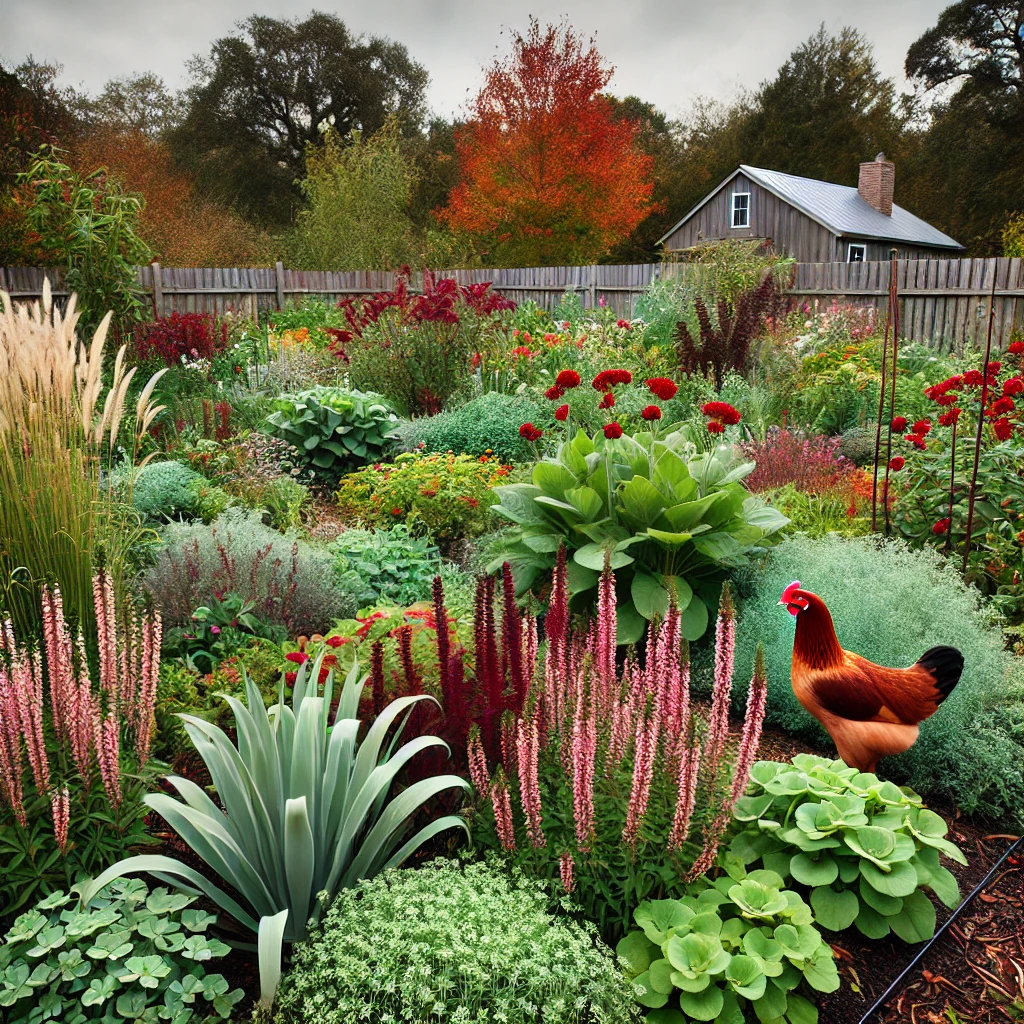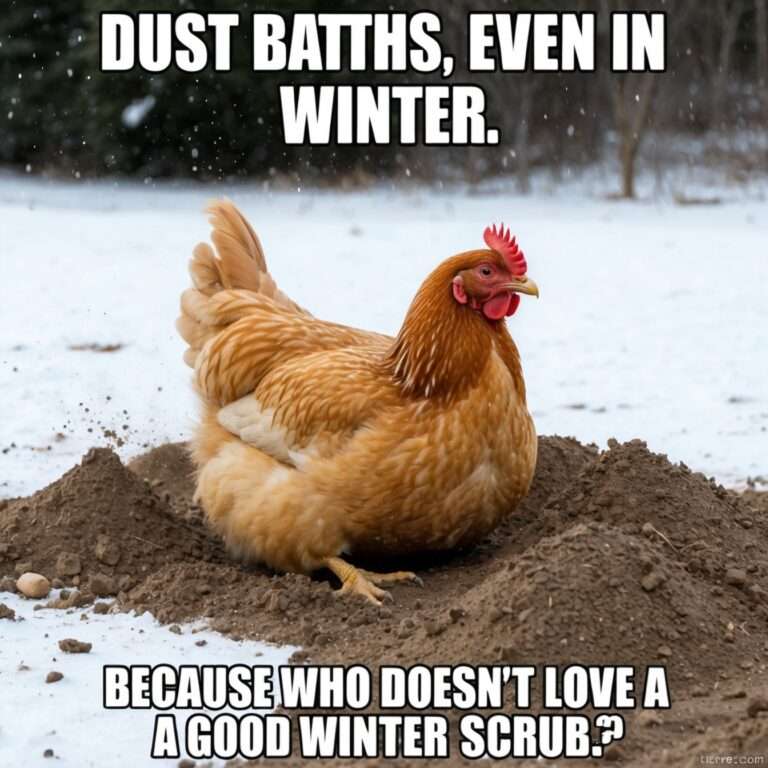
Benefits of fall planting with winter cover crops for soil health and chicken forage in Southeastern gardens.
Winter Cover Crops for Chickens: A Dual Benefit for Soil and Sustainability
Planting winter cover crops in the fall is one of the most impactful strategies for transforming your Southeastern garden into a sustainable and productive system. These crops not only enrich the soil but also provide seasonal forage for your backyard chickens, reducing feed costs while promoting natural behaviors. This guide explores why planting winter cover crops is essential, how it benefits both soil and chickens, and how it sets the stage for a thriving spring garden.
The Core Benefits of Winter Cover Crops
Winter cover crops do far more than prevent bare soil over the winter. They actively enhance your garden’s ecosystem by enriching the soil, suppressing weeds, conserving water, and supporting spring planting. Here’s how they benefit Southeastern gardens during the colder months:
1. Soil Enrichment and Health
Cover crops like crimson clover and Austrian winter peas are nitrogen-fixing plants that extract nitrogen from the air and deposit it into the soil. This natural fertilization eliminates the need for synthetic fertilizers and creates a balanced foundation for spring crops.
Additionally, crops like daikon radish break up compacted soil layers with their deep roots, improving aeration and water infiltration. Winter rye contributes organic matter as it decomposes, building a more resilient soil structure.
2. Erosion Control and Weed Suppression
Heavy winter rains in the Southeast can wash away unprotected topsoil. Cover crops stabilize the soil with dense root systems, minimizing erosion. At the same time, their foliage shades out weeds, reducing the need for chemical weed control.
3. Moisture Retention
Winter cover crops act as a natural “green mulch,” keeping the soil covered and reducing evaporation. This is particularly valuable in the Southeast, where winter weather alternates between heavy rain and drought-like dry spells. The retained moisture ensures your soil is ready to support spring planting.
4. Preparation for Spring Planting
By the time spring arrives, the biomass from cover crops can be tilled into the soil, adding nitrogen, carbon, and organic matter. This nutrient boost creates ideal conditions for heavy-feeding crops like tomatoes, peppers, and squash. The decomposition process also promotes microbial activity, essential for a thriving garden ecosystem.
Winter Cover Crops as Chicken Forage
For backyard chicken keepers, cover crops provide a sustainable way to supplement your flock’s diet. While they won’t completely replace feed, they add variety and improve overall nutrition.
1. Seasonal Forage Boost
Chickens thrive on natural forage, and cover crops like ryegrass, clover, and Austrian winter peas are rich in protein and nutrients. These crops encourage chickens’ instinctual foraging behaviors, promoting a happier and healthier flock during the winter months when traditional forage sources are scarce.
2. Supplementing, Not Replacing Feed
While winter cover crops provide valuable greens, chickens still require a complete diet, including protein, calcium, and essential vitamins for egg production and health. On average, using cover crops can reduce feed costs by 15–30%, depending on how intensively your chickens graze.
3. Rotational Grazing
To maximize the benefits of cover crops for your chickens, consider rotational grazing. This involves dividing your cover crop area into sections and allowing chickens to graze in one section at a time. Rotational grazing prevents over-foraging and allows the crops to regrow, ensuring a steady supply of forage.
4. Enhancing Free-Range Diets
If your chickens free-range beyond the cover crop area, they’ll also find insects, seeds, and other natural food sources. Cover crops become part of a diversified diet that reduces the flock’s reliance on manufactured feeds.
Why Fall Planting Is Critical for Spring Gardening
Planting cover crops in the fall is about more than just winter benefits—it’s about setting your garden up for success in the spring. Here’s why fall planting is a cornerstone of sustainable gardening:
1. Natural Fertility
Cover crops like legumes (e.g., clover and winter peas) enrich the soil by fixing nitrogen. As these crops decompose, they release nitrogen into the soil, making it available for your spring crops. This eliminates the need for synthetic fertilizers, supporting a healthier and more natural growing environment.
2. Improved Soil Structure
Cover crops like rye and daikon radish improve soil texture by breaking up compacted layers and enhancing aeration. This creates a loose, nutrient-rich environment that allows spring crop roots to grow deeply and access water and nutrients effectively.
3. Weed and Pest Control
A thick cover crop canopy prevents weed seeds from germinating by blocking sunlight. Some cover crops, like mustard greens, act as natural biofumigants, suppressing soil-borne pests and diseases. This reduces the need for chemical pest control in the spring.
Practical Tips for Planting Winter Cover Crops
- Choose the Right Crops: Select cover crops suited to your goals. Nitrogen-fixers like clover and peas enrich the soil, while rye and daikon radish improve structure. A mix of these ensures maximum benefits.
- Timing: Plant cover crops 4–6 weeks before the first frost to allow them to establish roots.
- Management: Mow or till under the cover crops before they go to seed in spring to prevent them from becoming invasive.
Final Thoughts: A Sustainable Future
Winter cover crops for chickens and gardens offer a harmonious blend of sustainability, productivity, and simplicity. Whether you’re enriching your soil, providing seasonal forage, or preparing for spring planting, these crops bring immense value to any backyard system. As gardeners and chicken keepers, let’s embrace this time-honored practice and take another step toward self-sufficiency. After all, the future of our food begins with the soil beneath our feet.
DARWIN’s Take: The Bigger Picture
In a world where quick-fix solutions dominate agriculture, planting winter cover crops is an act of quiet defiance. It’s a return to natural, sustainable practices that prioritize long-term soil health over short-term gains.
Today’s soils are often nutrient-depleted, relying heavily on synthetic fertilizers and pesticides. Winter cover crops offer an alternative—a self-sustaining system that enriches the soil, supports spring growth, and provides forage for backyard chickens. This isn’t just a gardening strategy; it’s a mindset shift.
Every cover crop planted today contributes to a more resilient food system. It reduces dependency on artificial inputs, restores balance to the ecosystem, and helps chickens thrive in a natural environment. In times of uncertainty, these small acts of resilience—planting, nurturing, and building healthy soil—become revolutionary.
Further Reading on Paranoid Prophet
- Paranoid Prophet – Chicken Dust Baths
This article explores the importance of dust baths for chicken health, including how they help prevent mites and lice, and offers practical advice on creating the perfect dust bath for your flock. - Paranoid Prophet – Winter Chicken Memes and Facts
A lighthearted but informative article combining fun memes with useful winter care tips for chickens, such as keeping their coop warm and maintaining a healthy diet during the colder months. - Paranoid Prophet – Wheatgrass and Hay for Winter Chickens
This resource highlights the nutritional benefits of wheatgrass and hay for chickens during winter. It explains how these additions can provide supplemental forage and improve overall flock health. - Paranoid Prophet – How Many Chickens to Start With?
A beginner’s guide for those considering starting a backyard flock. The article discusses the ideal number of chickens to raise based on space, resources, and personal goals. - Paranoid Prophet – Benefits of Raising Backyard Chickens
This article delves into the many advantages of raising backyard chickens, including fresh eggs, natural pest control, and the joy of keeping these engaging animals as part of a sustainable lifestyle.
Sources
- GardenersPath – How to Use Winter Cover Crops to Improve Soil
This resource provides an in-depth guide to selecting, planting, and utilizing winter cover crops to improve soil health and structure. It covers a range of cover crop species and explains their benefits in composting and nutrient cycling. - Epic Gardening – Fall Cover Crops: The Ultimate Guide
A comprehensive guide detailing the advantages of planting cover crops in the fall. This article focuses on how these crops prevent erosion, suppress weeds, and enrich the soil for the next growing season. - North Dakota State University – Planting Cover Crops Still Beneficial in Fall
This publication from NDSU emphasizes the value of cover crops even in challenging conditions, such as dry fall seasons. It includes practical advice for integrating cover crops into a sustainable farming or gardening plan. - Epic Gardening – Cover Crop Benefits
This article highlights the various benefits of using cover crops, including soil health improvement, moisture retention, and their role in organic gardening practices. It also provides tips for selecting the right cover crops for different climates and purposes.
FAQs: Winter Cover Crops for Chickens
General Questions About Winter Cover Crops
- What are the benefits of planting winter cover crops for chickens?
Winter cover crops provide nutritious forage for chickens while enriching the soil, reducing erosion, and preparing the garden for spring planting. - Which winter cover crops are best for Southeastern gardens?
Some excellent winter cover crops for Southeastern gardens include clover, Austrian winter peas, winter rye, daikon radish, and crimson clover. - How do winter cover crops improve soil health?
Winter cover crops fix nitrogen, increase organic matter, and improve soil structure by breaking up compacted areas with their root systems. - Do winter cover crops reduce feed costs for chickens?
Yes, winter cover crops can reduce feed costs by 15–30%, depending on how much forage the chickens consume and the variety of crops planted. - Can I use winter cover crops in a no-till gardening system?
Yes, winter cover crops work well in no-till systems. You can terminate them with mowing or flattening to create a natural mulch layer.
Cover Crop Selection and Planting
- What is the best time to plant winter cover crops for chickens?
The ideal time to plant winter cover crops is 4–6 weeks before the first frost to give them time to establish before winter. - What cover crops are safe for chickens to eat?
Safe cover crops for chickens include ryegrass, clover, winter peas, wheat, and oats. These crops are rich in protein and nutrients that support chicken health. - How do I choose the right mix of cover crops for my garden?
Choose a mix based on your goals. For nitrogen-fixing, use clover or peas. For soil structure, add daikon radish or rye. This mix also benefits chicken forage. - Can I plant cover crops in a raised bed for chickens?
Yes, winter cover crops can be grown in raised beds, providing greens for chickens while improving the soil in a contained space. - What’s the best way to plant cover crops for rotational chicken grazing?
Divide the area into sections and plant different crops in each. Rotate your chickens through each section to prevent overgrazing and allow for regrowth.
Chicken Diet and Foraging
- What are the best winter cover crops for egg-laying hens?
For egg-laying hens, focus on high-protein crops like clover, Austrian winter peas, and ryegrass. These crops improve diet variety and egg production. - Can winter cover crops replace chicken feed?
No, winter cover crops supplement chicken feed but cannot fully replace it. Chickens still need a balanced diet, including protein and calcium, for optimal health. - How do winter cover crops benefit free-range chickens?
Winter cover crops provide high-protein forage, allowing free-range chickens to supplement their diets naturally with greens, insects, and seeds. - Are there cover crops that chickens shouldn’t eat?
Avoid planting toxic plants like hairy vetch or nightshade species. Stick to chicken-safe crops like clover, peas, and ryegrass. - How can I protect cover crops from being overgrazed by chickens?
Use rotational grazing to allow cover crops to recover. Install fencing or moveable coops to control where chickens forage.


